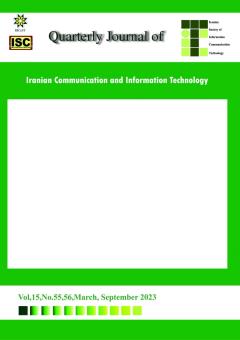Emerging technologies in future generations of high performance computing: introduction, taxonomy and future research directions
Subject Areas : ICT
mahmood nematollahzadeh
1
,
ehsan arianyan
2
,
Masoud Hayeri Khyavi
3
![]() ,
niloofar gholipoor
4
,
abdollah sepahvand
5
,
niloofar gholipoor
4
,
abdollah sepahvand
5
1 - ICT Research Institute
2 -
3 -
4 - ICT Research Institute
5 - ICT Research Institute
Keywords: High performance computing, quantum computing, biological computing, neuromorphic computing, optical computing, nano computing, in-memory computing.,
Abstract :
Due to the rapid growth of science and technology, their need for high performance computing is increasing everyday. So far, the majority of the world's high performance computing needs have been based on conventional silicon-based technologies, but the end of the age of silicon-based technologies is near, and this fact has led scientists to use emerging technologies such as quantum computing, bio computing, optical computing and similar technologies. Although some of these technologies are not new and the initial introduction of some of them dates back to some decades ago, but due to the attractiveness of classical silicon-based computing and the speed of development in it, have been neglected to date. However, recently, these technologies have begun to be used to build scalable high performance computers. In this paper, we introduce these technologies and how they participate in the field of high performance computing, their current and future status, and their challenges. Also, the taxonomy related to each of these technologies from the computational point of view as well as their research topics are presented, which can be utilized for future research in this field.
[ ]. Moore, Gordon. "Moore’s law." Electronics Magazine 38.8 (1965): 114.
[ ]. Mack, Chris. "The multiple lives of Moore's law." IEEE Spectrum 52.4 (2015): 31-31.
[ ]. Burstein, Elias, and Stig Lundqvist, eds. Tunneling phenomena in solids. New York: Plenum Press, 1969.
[ ]. https://en.wikipedia.org/wiki/Moores_law
[ ]. https://www.top500.org/
[ ]. Aaronson, Scott. "The limits of quantum." Scientific American 298.3 (2008): 62-69.
[ ]. Hartnett, Kevin. "Finally, a Problem That Only Quantum Computers Will Ever Be Able to Solve.", Quanta Magazine, 2018.
[ ]. Lucas, Andrew. "Ising formulations of many NP problems." Frontiers in physics 2, 2014.
[ ]. Markov, Igor L., et al. "Quantum supremacy is both closer and farther than it appears." arXiv preprint arXiv:1807.10749 (2018).
[ ]. Häner, Thomas, and Damian S. Steiger. "5 petabyte simulation of a 45-qubit quantum circuit." Proceedings of the International Conference for High Performance Computing, Networking, Storage and Analysis. 2017.
[ ] E. Wiseman, "Next Generation Computing," National Research Council of Canada / Government of Canada, Montreal, 2016.
[ ] "computersciencedegreehub," 2021. [Online]. Available: https://www.computersciencedegreehub.com/biocomputing/.
[ ] Gexiang Zhang; Zeyi Shang; Sergey Verlan ET AL, "An Overview of Hardware Implementation of Membrane Computing Models," ACM Computing Surveys, vol. 53, no. 4, p. 1–38, 2020.
[ ] A.-M. Ionescu, MEMBRANE COMPUTING: TRACES, NEURAL INSPIRED MODELS, CONTROLS, VDM Verlag, 2009.
[ ] M. Amos, "DNA computing," Encyclopedia Britannica, Agust 2021. [Online]. Available: https://www.britannica.com/technology/DNA-computing
[ ] Ping, Zhi; Ma, Dongzhao; Huang, Xiaoluo et al, "Carbon-based archiving: current progress and future prospects of DNA-based data storage," GigaScience, vol. 8, no. 6, 2019.
[ ] Katz, Evgeny. "DNA Computing: Origination, Motivation, and Goals–Illustrated Introduction." DNA‐and RNA‐Based Computing Systems (2021): 1-14.
[ ] Im, In Hyuk; Kim, Seung Ju; Jang, Ho Won, "Memristive Devices for New Computing Paradigms," Advanced Intelligent Systems, vol. 2, no. 11, 2020.
[ ] V. P. Torres J.J., "Modeling Biological Neural Networks," in Handbook of Natural Computing, Berlin, Heidelberg, Springer, 2012, pp. 533-564.
[ ] "PARALLEL NETWORK-BASED BIOCOMPUTATION," [Online]. Available: https://bio4comp.org/.
[ ] Angel Goñi-Moreno; Pablo I. Nikel, "High-Performance Biocomputing in Synthetic Biology–Integrated Transcriptional and Metabolic Circuits," frontiersin, 2019.
[ ] Sandro Fiore; Mohamed Bakhouya; Waleed W. Smari, "On the road to exascale: Advances in High Performance Computing and Simulations—An overview and editorial," Future Generation Computer Systems, vol. 82, pp. 450-458, 2018.
[ ]. “Optical Comput. Wikipedia, Free Encycl. https//en.wikipedia.org/wiki/ Opt.
[ ]. Naughton, Thomas J., and Damien Woods. "Optical computing." (2015): 1-26.
[ ]. Jain, K., and G. W. Pratt Jr. "Optical transistors and logic circuits embodying the same." US Pat 4 (1983).
[ ]Rao, Dalai G. Sankar, Sandip Swarnakar, and Santosh Kumar. "Performance analysis of all-optical NAND,
NOR, and XNOR logic gates using photonic crystal waveguide for optical computing applications." Optical Engineering 59.5 (2020): 057101. [ ]. Lacava, Cosimo, et al. "Si-rich silicon nitride for nonlinear signal processing applications." Scientific Reports 7.1 (2017): 1-13.
[ ]. Bowers, John E., and Alan Y. Liu. "A comparison of four approaches to photonic integration." Optical Fiber Communication Conference. Optical Society of America, 2017.
[ ]. Fu, Y., Hu, X., & Gong, Q. (2013). Silicon photonic crystal all-optical logic gates. Physics Letters A, 377(3), 329–333. https://doi.org/https://doi.org/10.1016/j.physleta.2012.11.034
[ ] Singh, Jeevan Jot, Divya Dhawan, and Neena Gupta. "All-optical photonic crystal logic gates for optical computing: an extensive review." Optical Engineering 59.11 (2020): 110901. [ ] Sun, Chen, et al. "Single-chip microprocessor that communicates directly u
sing light." Nature 528.7583 (2015): 534-538.
[ ] Oltean, Mihai, and Oana Muntean. "Solving the subset-sum problem with a light-based device." Natural Computing 8.2 (2009): 321-331.
[ ] Oltean, Mihai. "A light-based device for solving the Hamiltonian path problem." International Conference on Unconventional Computation. Springer, Berlin, Heidelberg, 200


